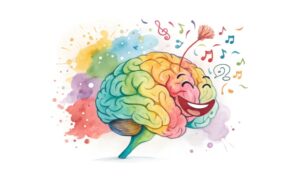Introduction
In today’s fast-paced world, people are constantly searching for ways to improve their physical, mental, and emotional well-being. One alternative healing practice that has gained significant popularity is Reiki. This article aims to provide an in-depth understanding of Reiki, explaining how this energy healing works and exploring its numerous health benefits.
What is Reiki?
Reiki, a Japanese term meaning “universal life energy,” is an ancient healing technique that originated in the early 20th century. It involves the transfer of positive energy from the practitioner to the recipient through gentle touch or hovering hands over specific areas of the body. The purpose of Santa Fe Reiki is to balance the body’s energy, promote relaxation, and stimulate the natural healing processes.
The Principles of Reiki
Reiki follows five fundamental principles that serve as guidelines for a balanced and harmonious life. These principles are:
- Just for today, I will not be angry.
- Just for today, I will not worry.
- Just for today, I will be grateful.
- Just for today, I will do my work honestly.
- Just for today, I will be kind to every living thing.
By embodying these principles, individuals can cultivate a positive mindset and promote overall well-being.
Understanding Energy Healing
At its core, Reiki is based on the belief that every living being has a life force energy flowing through them. When this energy is disrupted or blocked, it can lead to physical, emotional, or spiritual ailments. Reiki aims to restore the balance and flow of this energy, facilitating healing on multiple levels.
The Reiki Session
During a Reiki session, the recipient lies down comfortably, fully clothed, while the practitioner places their hands lightly on or just above various areas of the body. The practitioner acts as a channel for the universal life energy, allowing it to flow through their hands and into the recipient’s body. This process helps to rebalance the energy centers, also known as chakras, and promote overall well-being.
Reiki Symbols and Their Significance
Reiki practitioners use symbols to enhance the healing process. These symbols, such as Cho Ku Rei (power symbol), Sei Hei Ki (mental and emotional healing symbol), and Hon Sha Ze Sho Nen (distance healing symbol), amplify the flow of energy and enable practitioners to connect with specific aspects of healing.
Benefits of Reiki Healing
Reiki offers a wide range of health benefits, including:
Reiki and Stress Reduction
Reiki helps reduce stress by promoting deep relaxation, releasing tension, and calming the mind. It aids in relieving anxiety, improving mental clarity, and enhancing overall emotional well-being.
Reiki for Pain Management
Reiki has been found to alleviate physical pain and discomfort by restoring the body’s natural energy flow. It can complement conventional medical treatments and contribute to a holistic approach to pain management.
Reiki and Emotional Healing
By addressing energy imbalances and emotional blockages, Reiki can facilitate emotional healing. It supports individuals in processing and releasing negative emotions, fostering inner peace, and promoting emotional resilience.
Reiki and Improved Sleep
Regular Reiki sessions have been known to improve the quality of sleep by reducing insomnia, promoting relaxation, and relieving the effects of accumulated stress.
Reiki and Enhanced Well-being
Reiki helps restore balance and harmony in the body, mind, and spirit. It boosts energy levels, strengthens the immune system, and promotes an overall sense of well-being.
Reiki for Spiritual Growth
Beyond its physical and emotional benefits, Reiki can serve as a powerful tool for spiritual growth and self-discovery. It helps individuals connect with their inner selves, deepen their intuition, and expand their consciousness.
Reiki and Complementary Medicine
Reiki is often used as a complementary therapy alongside conventional medical treatments. Its holistic approach can support and enhance the effectiveness of medical interventions, promoting overall wellness.
Reiki and Self-Care Practices
Reiki empowers individuals to take an active role in their well-being through self-care practices. Techniques such as self-Reiki, meditation, and mindfulness can be incorporated into daily routines to maintain a healthy energy flow and promote overall balance.
Conclusion
Reiki offers a gentle and non-invasive approach to healing that can benefit individuals on physical, emotional, and spiritual levels. By harnessing the universal life energy, Reiki helps restore balance, reduce stress, alleviate pain, and promote overall well-being. Incorporating Reiki into one’s self-care routine can lead to a more harmonious and fulfilling life.
FAQs (Frequently Asked Questions)
- Can anyone learn Reiki?
- Yes, Reiki can be learned by anyone. It is not limited to a specific age group or background.
- How long does a Reiki session last?
- The duration of a Reiki session can vary but typically lasts between 60 to 90 minutes.
- Are there any side effects of Reiki?
- Reiki is a safe practice and generally does not have any harmful side effects. Some individuals may experience emotional release or temporary sensations during or after a session.
- Can Reiki be combined with other healing modalities?
- Yes, Reiki can be combined with other healing modalities to enhance their effects and promote overall well-being.
- How many Reiki sessions are recommended?
- The number of Reiki sessions recommended varies depending on individual needs and goals. Some individuals may benefit from regular sessions, while others may find relief with fewer sessions.



































